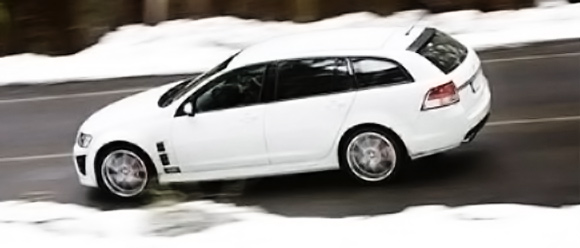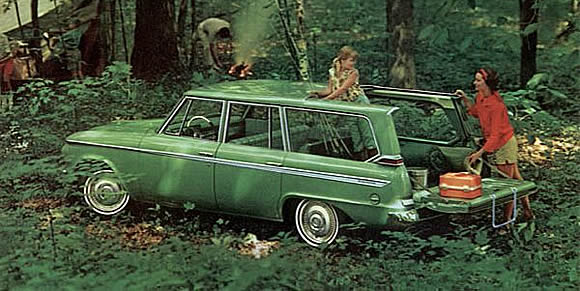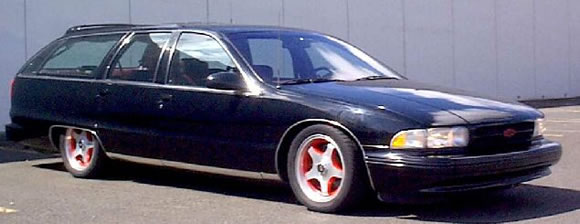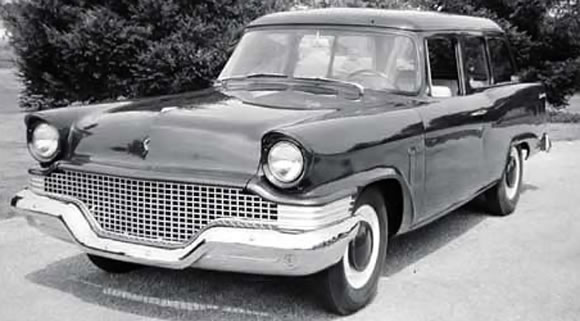This Pontiac Holden Clubsport has a Corvette V8 engine with 425 hp and 405 ft/lb of torque. Too bad this GM isn’t available in the states.
Category Archives: Worldwide Wagons
The New Outback

The Truth About Cars lays waste to the 2010 Outback, claiming it’s moved from being a cool off-road wagon into a cookie-cutter CUV. The last redesign was in 2005 and looked handsome and relatively sleek; not quite as sexy as the Legacy Wagon but still cool. Now it just looks chunky and clunky. Let’s hear what TTAC has to say:
Towering more than four inches higher than its predecessor, spanning two inches more across the beam, standing another awkward inch higher off its tires, the new Outback looks—IS huge. The super-chunk roof rails are grossly exaggerated (until you discover the trick design that allows the crossbars to disconnect and swing 90 degrees to find residence integrated in the longitudinal rails). The rear quarter view screams “Venza!â€â€”which is like shouting “movie†in a crowded firehouse. Curiously, there wasn’t a Tribeca on the showroom floor. Cannibalism avoidance? Either that or the former “flying vagina†was hidden by the swollen Outback.
…
The Outback’s ergonomics couldn’t be further from Audi’s if they were designed by Daewoo. Every button on the Outback’s dash now requires reading glasses, a precise finger, and a map. Twin Big Gulps and a swollen armrest bin take precedence over the handbrake, which has been demoted to a tiny button buried left of the steering column amidst a myriad of other tiny, illegible, and obstructed switches for stability control, external mirrors, trunk release, and a bunch of curious blanks. To compensate, the twin steering column stalks are chunkier. Thanks. So much.
From TTAC
Ghostbusters Ecto-1 for sale
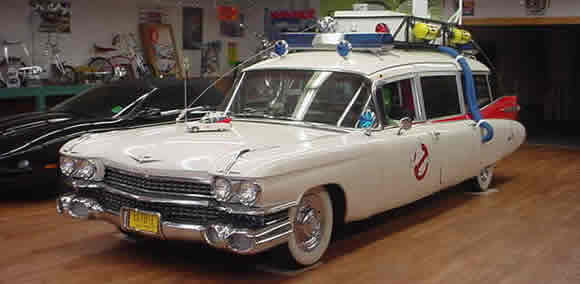
The Ghostbusters wagon hearse ambulance was for sale yesterday on eBay. Final bid was $45,100, which didn’t reach the reserve for this 1959 Caddy. So you’ll have a chance next time.
via mediabistro
Studebaker Wagonaire
This almost-a-convertible-not-quite-an-El-Camino wagon was created by Studebaker on the Lark station wagon body. The retractable roof was built into the rear to allow tall cargo to be transported upright. From the ad above, I assume this meant your fishing poles, or your daughter, but I’m sure there were other ways to get them into a converntional wagon.
Any owner of a 240 with a sunroof can guess what problems arose from the Wagonaire’s retractable roof; it leaked like a sieve. Although Studebaker fixed this problem in later years, the model was doomed to a production run of 3 years and open air rear styling for wagons never caught on.
NYT asks: What’s Become of the Wagon?
 Lawrence Ulrich, the self described “pro-wagon” auto critic for the NY Times, spends almost a third of his Audi Q5 review today analyzing the state of the American station wagon:
Lawrence Ulrich, the self described “pro-wagon” auto critic for the NY Times, spends almost a third of his Audi Q5 review today analyzing the state of the American station wagon:
There’s no longer any debate or any doubt: Americans hate station wagons. Deep down, they still love and want their S.U.V.’s, even if most of these are now marketed as crossovers, a politically soothing yet increasingly pointless distinction.
Car companies foreign and domestic have learned that the best way to stumble in this market is to design and market a station wagon, no matter how practical, sporty or affordable. (Make an exception for Subaru and its wagon fanatics.) The best way to succeed is to offer a decadent, overweight would-be S.U.V. that looks bulky and capable but is mostly used for mall reconnaissance; even a weekend trip with two parents and two children can overwhelm the cargo-carrying ability of the typical downsized, do-little luxury crossover.
He pulls out the sales figures for European wagons to prove it:
Audi sold nearly 21,000 of its big Q7 crossover in 2007, compared with barely 2,800 of its sprightly A4 Avant wagon and just 758 of the larger A6 wagon.
…the BMW X3 crossover outsold the hotter-performing, higher-mileage 3 Series wagon by better than 10 to 1.
…Even Volvo’s wagon sales were halved when it introduced its XC90 crossover.
In stating that “The Dodge Magnum and Mazda 6 wagon are two recent examples of conventional wagons that critics loved and consumers rejected,” he highlights an American phenomenon I find difficult to understand.
The Last American Cruise Ship
Capriceshop.com has an image collection of modified Chevy Caprice and Buick Roadmaster wagons that looks pretty bad ass. These huge sleds have acres of trunk space, are rear-wheel-drive and are one of the last American wagons, becoming extinct in 1996 when SUVs took over the market for gigantic, gas-guzzling family cruisers.
Wheel Standing Wagon
I’m headed to the drag races at Raceway Park in NJ today. Don’t know if I’ll see any wagons like this nutty ride, but I can hope.
The Honda Not-a-Wagon
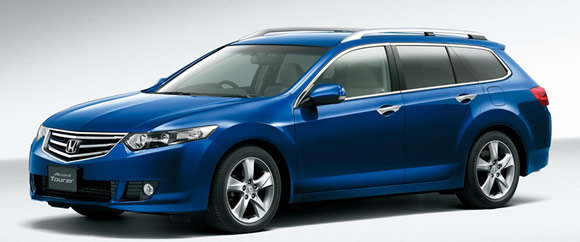 Jalopnik reports that Honda will be selling an Accord wagon in the US, similar to the European Accord Tourer pictured above. But it’s not a wagon, It’s a “CUV”. Whatever you call it, it looks pretty sweet.
Jalopnik reports that Honda will be selling an Accord wagon in the US, similar to the European Accord Tourer pictured above. But it’s not a wagon, It’s a “CUV”. Whatever you call it, it looks pretty sweet.
Studebaker Scotsman
I had never heard of the stereotype of Scotsmen being frugal and cheap until I saw this post on Sociological Images. It was well known enough in the 1950s, however, that Studebaker made a line of vehicles under the “Scotsman” name. This included the station wagon pictured above.
According to info on Wikipedia, the Scotsman was Studebaker’s attempt to position itself as the maker of inexpensive, bare-bones cars, in contrast to the Big Three automakers miles of chrome, fins and gimmicks. Base price for a 2 door was the patriotic $1776, but it could be had for less than that if the buyer opted for painted bumpers and wheels instead of chrome.
The interior had no carpeting, just rubber mats on top of steel. Gray vinyl seats and painted cardboard trim (!) were the only interior options and rear passengers were unable to open their windows. Accessories were limited, and dealers were instructed to steer buyers looking for frills to upgrade to the Champion line.
Studebaker managed to deliver a reported 30 MPG from the inline six, making it one of the most economical cars of its size. With 0-60 times of around 20 seconds, it was also one of the slowest.
RIP Chrysler Pacifica
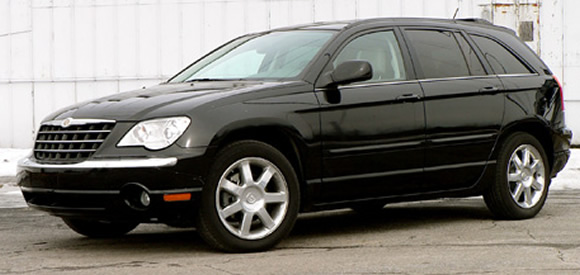
For a vehicle that’s almost a wagon but not quite a mini-van, the Chrysler Pacifica seemed to have everything going for it. With a lower ride than an SUV, but more cargo space than a car, this CUV (crossover utility vehicle) seemed a great match for families. But as The Truth About Cars documents, DaimlerChrysler took yet another promising concept and f-ed it up:
In keeping with Motown traditions, the first Pacificas hit dealer showrooms fully-loaded: all wheel-drive, load-leveling suspension, leather upholstery, heated first and second-row seats, sunroof, power liftgate, navigation (beautifully situated directly in front of the driver), dual zone climate control, DVD entertainment system and Sirius satellite radio. While the car’s upscale pretensions were obvious from the git-go, potential customers couldn’t see the price point. Initial Pacificas cost north of $35K. Even worse, the CUV’s build quality didn’t match the model’s “near luxury†aspirations. In-dash rattles, plastic panels that fell off, unpainted gas caps—the Pacifica (along with the new Crossfire Sports Car) was ground zero for dreams of Mercedes quality combined with Chrysler style.
But it looks to me like Mercedes has had problems with this market too.
